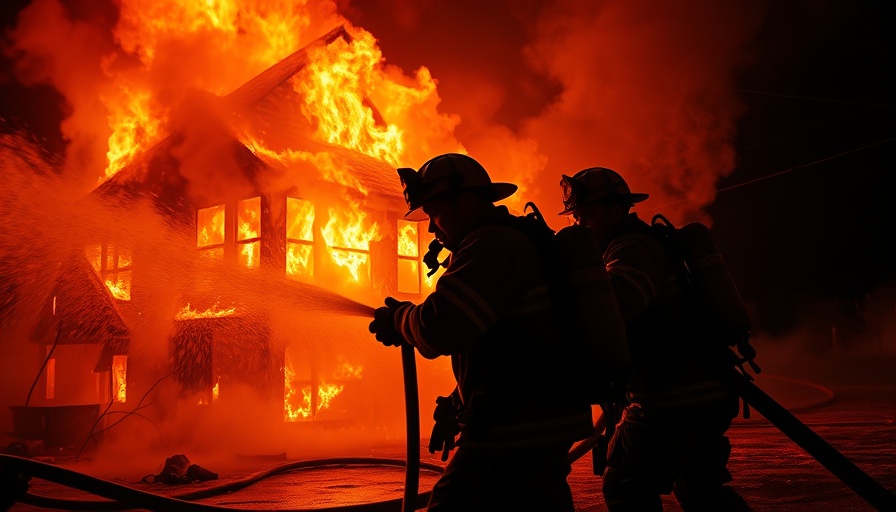
Understanding the Catastrophe: The Palisades Fire
In early January 2025, Southern California was gripped by the devastating Palisades fire, which has since been labeled the most destructive wildfire in Los Angeles history. Not only did the blaze result in the loss of 12 lives, but it also burned over 23,000 acres and destroyed nearly 6,800 structures. Recent revelations regarding the fire's origins have ignited a fiery debate about responsibility, resource allocation, and the effectiveness of local firefighting efforts.
The Link Between Fires: Lachman and Palisades
Authorities allege that the Palisades fire was a “holdover” fire from the earlier Lachman fire, which ignited on January 1, 2025. Jonathan Rinderknecht, a 29-year-old from Florida, has been charged with starting the Lachman fire. According to federal prosecutors, while the fire appeared to be suppressed quickly, it had continued to burn underground in the dense vegetation's root structures, only to reignite days later on January 7, driven by fierce winds. This series of events raises serious questions about the burn protocols and readiness of the Los Angeles Fire Department (LAFD) at a time when the community expected vigilant oversight from fire management.
Community Concerns and Accountability
Residents impacted by the Palisades fire have begun to voice suspicions and frustrations regarding the management of both the Lachman fire and the Palisades fire itself. Questions loom: Why didn't firefighters ensure that the Lachman fire was fully extinguished? Could more resources have been dispatched in anticipation of extreme weather conditions?
Some community members have pointed fingers at the LAFD, suggesting that emergency response protocols were not adequately followed. Blake Armstrong, whose home suffered damage, reflected on the shocking news of Rinderknecht's arrest, stating, “The nexus between the fact he started a fire on January 1 and it reignited seems attenuated to me as to his intent, but I look forward to seeing what the evidence is.” These evolving narratives highlight the sense of uncertainty and betrayal felt by residents who have lost everything.
The Investigation Unfolds
As investigations into the fire's roots unfold, authorities have gathered incriminating evidence against Rinderknecht, claiming he attempted to cover his tracks after starting the initial fire. Digital data shows that he consulted ChatGPT regarding accountability for fire-related damages, which prosecutors argue illustrates a conscious effort to seek an innocent explanation for his actions. Rinderknecht's behavior, including his frantic 911 calls after igniting the fire, adds to the intrigue and severity of the case against him.
Firefighting Under Pressure
With the enormity of the disaster at hand, both firefighters and residents have spoken about the challenges of combating the flames. Firefighter Denise Doyen, a survivor of the Palisades fire, expressed frustration with the unprecedented wind conditions that complicated firefighting efforts, stating, “They were doing a great job, but it was impossible odds once the winds were that bad and the airplanes were grounded.” This sentiment echoes throughout the community, as many are left to ponder what could have been done differently.
Future Lessons Learned
As investigations continue and a broader discussion about wildfire preparedness takes place, California's firefighting strategies are likely to be evaluated critically. Already, California Governor Gavin Newsom has called for a complete assessment of the firefighting response to ensure that mistakes from the Palisades fire are not repeated. “What lessons we learned,” he stated, emphasizing the importance of understanding these phenomena to prevent future tragedies.
Conclusion: Seeking Closure and Hope
The arrest of Jonathan Rinderknecht may mark a crucial step towards justice for the victims of the Palisades fire, but it does little to mend the scars left upon the community. As residents rebuild their lives amidst uncertainty, the need for improved fire management and a more prepared firefighting response looms larger than ever. For those in and around Bakersfield and throughout California, the lessons learned from this tragedy remain vital not only in healing but also in strengthening the region's resilience to future natural disasters.
 Add Row
Add Row  Add
Add 



Write A Comment